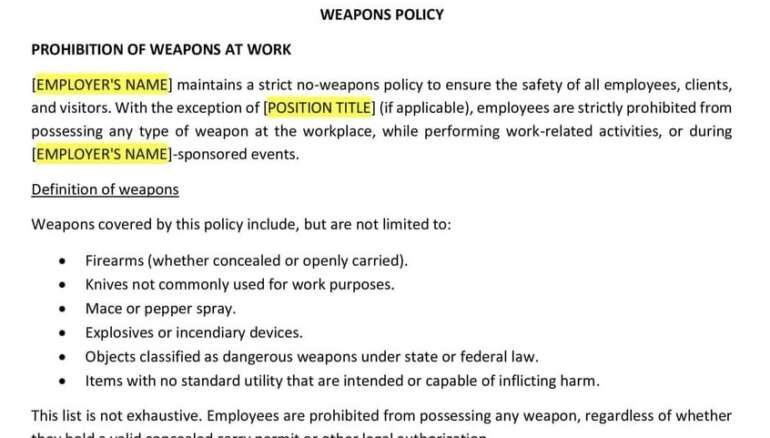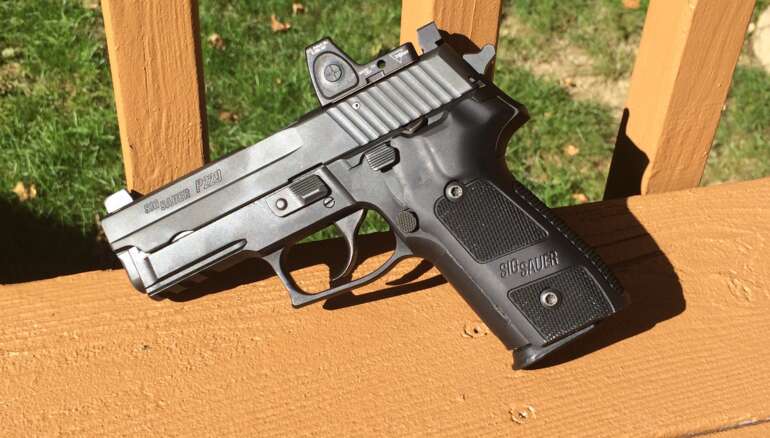The views expressed in this article are those of the author and do not necessarily reflect the views of Gunset Training Group or its affiliates.
Click HERE to view the original post on the GunSnobbery Blog
This story has it all – a criminal case that hinges on recklessness, firearm safety rule #3 (when your finger should go to the trigger) and the great P320 unintentional discharge debate. Oh, wait, let’s not forget the coroner’s decision to rule this a suicide and the circus show that turned out to be. But this story is one that every firearms instructor, LEO and law abiding, gun carrying citizens in Ohio should know about.
Let’s go back to July of 2022. The deceased, who was intoxicated and had a warrant for his arrest, failed to stop for a Highland County Sheriff’s Sergeant when the Sergeant tried to stop him for running a stop sign early one Sunday morning. During a fairly long high speed pursuit, the deceased’s truck tires were deflated by stop sticks. The truck eventually came to a stop. After stopping, the deceased failed to obey commands to exit the vehicle. The Sergeant and other Deputies on scene approached the truck with pistols drawn. The Sergeant, who is RIGHT handed, placed his P320 in his LEFT hand and used his ASP expandable baton to break out the passenger window and then the driver’s window of the truck. He stated he kept the pistol pointed at the driver while he was swinging the ASP. As he’s breaking out the driver’s window a shot is fired. The single gun shot kills the driver of the vehicle. According to another Deputy, the Sergeant told him he didn’t pull the trigger and the gun just went off.
Approximately 9 months later, the Sergeant was charged with Reckless Homicide. Ohio is different from most states in the fact that we don’t have Murder in the 1st, 2nd, 3rd degree or Manslaughter in the various degrees. We’ve got (in order from highest to lowest level) Aggravated Murder, Murder, Voluntary Manslaughter, Involuntary Manslaughter, Reckless Homicide and Negligent Homicide. The Reckless Homicide statute says, “No person shall recklessly cause the death of another or the unlawful termination of another’s pregnancy.” Reckless Homicide is a felony of the 3rd degree and carries a maximum penalty of 5 years in prison, although an additional gun specification can add a couple years to that.
Under Ohio law, a person acts recklessly when, “with heedless indifference to the consequences, the person disregards a substantial and unjustifiable risk that the person’s conduct is likely to cause a certain result or is likely to be of a certain nature. A person is reckless with respect to circumstances when, with heedless indifference to the consequences, the person disregards a substantial and unjustifiable risk that such circumstances are likely to exist.”
The crux of the State’s case was this – it was reckless to dual wield a pistol and an ASP and to do so while pointing the pistol at the deceased. And this recklessness, when the defendant had an “unintentional discharge”, killed the driver of the vehicle.
This court live streams their hearings to YT, so I got watch a good portion of the trial. You can watch state’s witnesses, a defense expert and the defendant’s testimony here . Defendant’s expert (police best practices) is at the 6 hour and 20 minute mark. Defendant is at the 7 hour mark. Another defense expert (engineer) and closing arguments can he watched here. The documents from the BCI investigation can be found here under the name “Richard Poulin”.
If you have a couple hours, I’d at least watch the expert for the defense, the defendant and the closing arguments. Here are the things that really stuck out from the trial:
- 5 current LEOs testified. None of the 5 said they had ever been trained to dual wield a pistol and an ASP.
- The State did not put on ANY expert witnesses that could testify about firearms and/or ASP training. They relied on the 3 Deputies on scene with the Sergeant and the 2 BCI Special Agents that did the investigation for any questions about training. The only state expert was a firearms examiner who tested the operability of the P320 (including drop tests) and did the tool mark comparison of the bullet and shell casing.
- Since the Prosecution did not put any firearm instructors from outside the agency on the stand, I think the jury was given an unrealistic impression of why we do non-dominant hand training, when it should be used and the level of skill (or lack thereof) a good percentage of LEOs display with their non-dominant hand.
- There was a lot of talk about Rule #3 and when it was appropriate to put your finger on the trigger of the pistol. I’ll come back to this in Part 2.
- The defense expert witness testified that dual wielding the pistol and ASP while keeping the pistol pointed at the driver was within best state and federal law enforcement practices.
- The defendant testified it was a common practice of his to transfer his pistol to his non-dominant hand while using his dominant hand for things like using his ASP or holding the leash of his police K-9 when he was a dog handler.
- The P320 was on trial as well since the defendant claimed he didn’t fire the pistol.

In the end, the jury found the Defendant not guilty after a relatively short deliberation. Frankly, I was not surprised for several reasons:
- First and foremost, this happened in a conservative county and the defense attorney did a really good job of reminding the jury that the deceased died because HE, not the Defendant, set in motion the series of events that led to his death.
- Second, I also think the defense attorney did a good job of keeping the jury focused on the use of force and policy issues and not the gun handling and tactic issues that are no doubt bouncing around in the minds of many of you readers. The Defendant didn’t violate any policy or any use of force law.
- And last, the Prosecution did a piss poor job of trying to prove the weapon handling issues which led to the unintentional discharge were reckless. I seriously do not understand why they did not put a single firearms, use of force or ASP instructor on the stand to talk about training. And the defense attorney called them on it. The defense made a big production of the fact that the State agency that investigated the shooting is right across the street from the State law enforcement training academy and the myriad of training experts it contains, yet those experts were never consulted. To me, it looked as if the Prosecution didn’t really want to get a conviction.
So why is this case important? It’s another example of how the times are changing. States (I’m this case Ohio) are taking a much harder look at deaths related to police actions. I don’t think that’s necessarily a bad thing so long as it isn’t a witch-hunt. This Sergeant was lucky in a couple of ways. First, he’s lucky the State didn’t add Negligent Homicide (a misdemeanor) to the indictment. Negligence is easier to prove than recklessness. Had that charge been on the table, I’m not sure he would have ended up with the same verdict. Second, he’s lucky that this happened in Highland County. Had this been tried in Montgomery, Franklin, Hamilton, Cuyahoga or a few other counties there would have been a broader jury pool with a different makeup than what this jury had. Remember rookie NYPD cop Peter Liang? He was convicted of 2nd degree manslaughter for killing Akai Gurley in the stairwell of an apartment building when he had an unintentional discharge with his Glock. He was fortunate – the Judge reduced the conviction to a criminally negligent homicide.
Imagine a similar scenario for a law abiding, gun carrying citizen – the citizen is threatened in some manner and are initially justified in drawing their pistol and pointing it at a bad guy. The bad guy has a change of heart when he sees the pistol appear and stops whatever he was doing. Since he is no longer an immediate threat, the citizen is no longer justified in shooting, although he is probably still justified in keeping his gun pointed at the bad guy. What if the citizen slips or trips and because they had their finger on the trigger that loss of balance causes the citizen to clench his hand and that causes the pistol to fire, killing the bad guy. Is that reckless? Or negligent? Neither?
Luck, in the form of a sympathetic jury, an unsympathetic victim or being in a conservative county, shouldn’t be a part of your plan for surviving the legal fight after an armed encounter. I’ve got some thoughts on Rule #3 I’ll share in the next article, but I’ll leave you with this question – does your current training regimen adequately address Rule #3?



